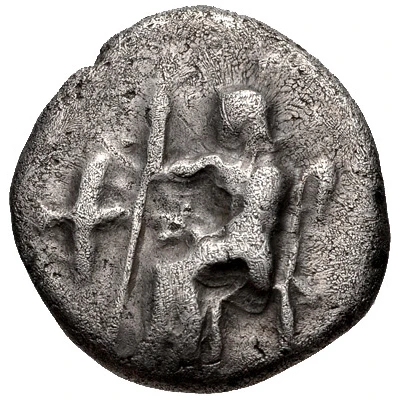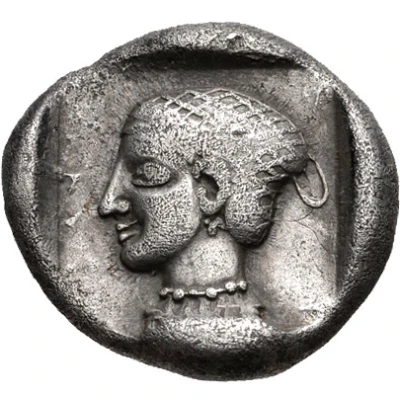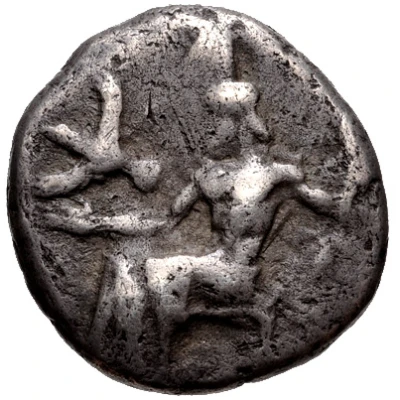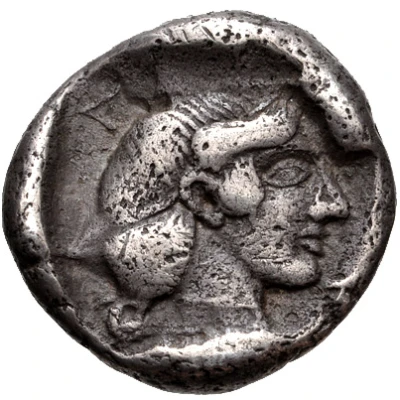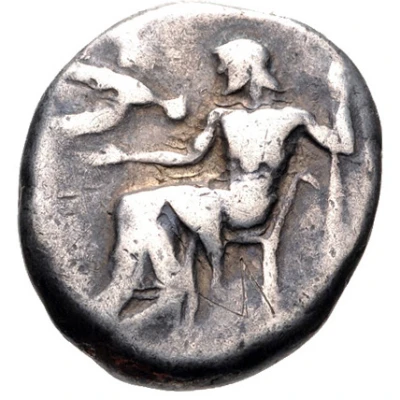
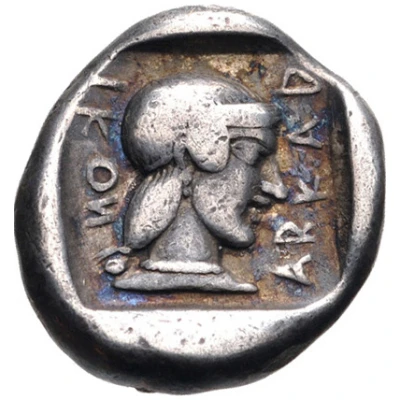

© Classical Numismatic Group, Inc.
Hemidrachm Kleitor 460 BC - 450 BC
| Silver | 2.97 g | 13.0 mm |
| Issuer | Arcadian League (Arkadia) |
|---|---|
| Type | Standard circulation coin |
| Years | 460 BC - 450 BC |
| Value | Hemidrachm (½) |
| Currency | Drachm |
| Composition | Silver |
| Weight | 2.97 g |
| Diameter | 13.0 mm |
| Shape | Round (irregular) |
| Technique | Hammered, Incuse |
| Demonetized | Yes |
| Updated | 2024-10-09 |
| Numista | N#153138 |
|---|---|
| Rarity index | 100% |
Reverse
Head of Kallisto facing right, wearing a tainia, within incuse square. Inscription split by Kallisto
Script: Greek
Lettering:
ΑΡΚΑΔ
ΙΚΟΝ
Comment
BCD Peloponnesos II 2563.
Interesting fact
The Hemidrachm (Kleitor) coin was used as a form of currency in ancient Greece, specifically in the Arcadian League (Arkadia) during the 5th century BC. The coin features an image of a stag on one side and an inscription on the other side that reads "KLEITOR" in ancient Greek. The stag symbolized the wealth and prosperity of the Arcadian League, and the coin was used for everyday transactions and trade. It's interesting to note that the Hemidrachm (Kleitor) coin was made of silver, which was a valuable and widely used metal in ancient Greece. The coin's weight of 2.97 grams is also notable, as it suggests that the coin was designed to be easily portable and practical for everyday use. Overall, the Hemidrachm (Kleitor) coin is a fascinating piece of history that provides insight into the economic and cultural practices of ancient Greece.
